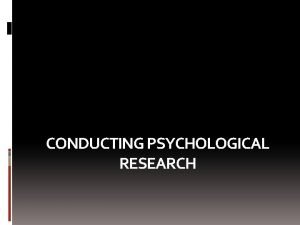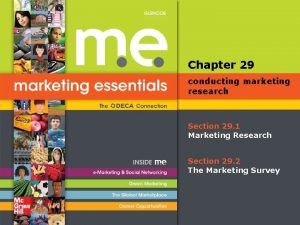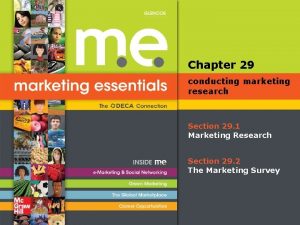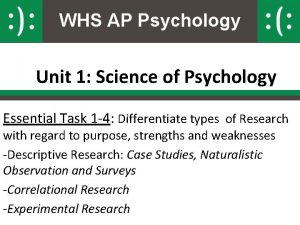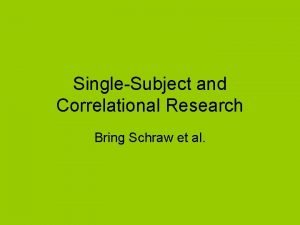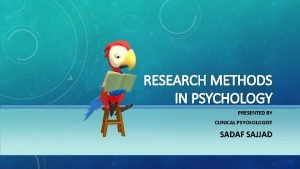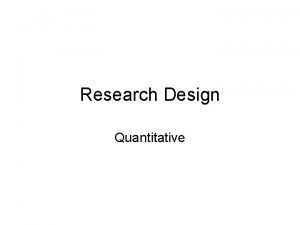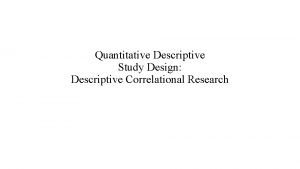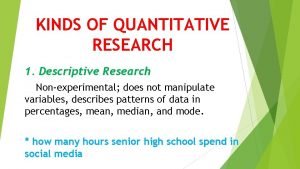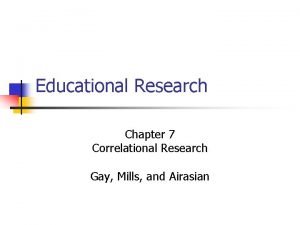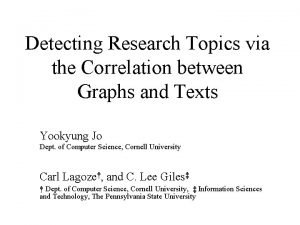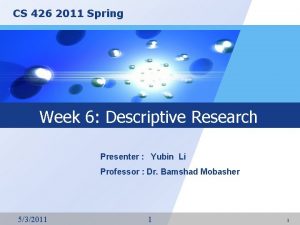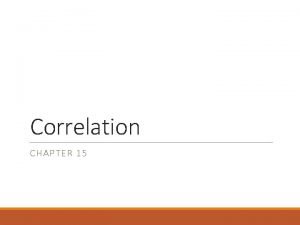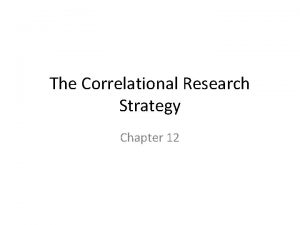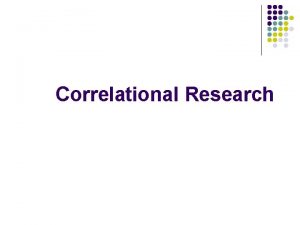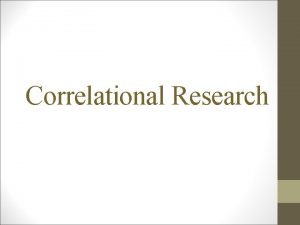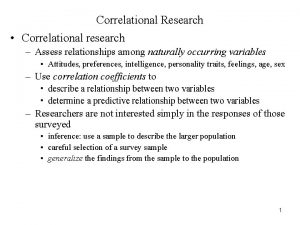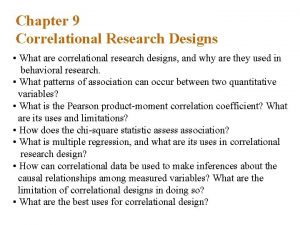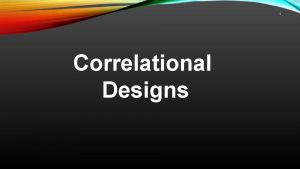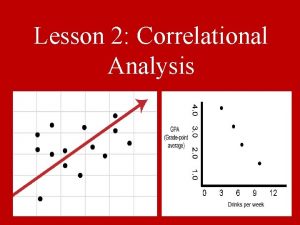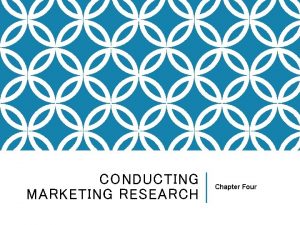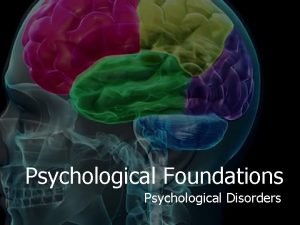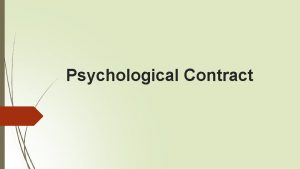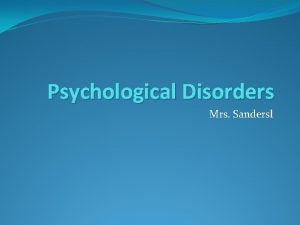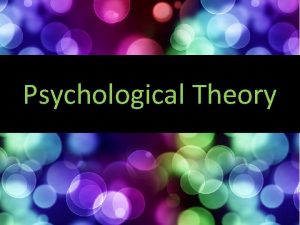CHAPTER II CONDUCTING PSYCHOLOGICAL RESEARCH CORRELATIONAL RESEARCH DEF















- Slides: 15

CHAPTER II CONDUCTING PSYCHOLOGICAL RESEARCH


CORRELATIONAL RESEARCH • DEF: Research in which the relationship between two sets of variables is examined to determine whether they are associated, or “correlated. ” • The strength and direction of the relationship between the two variables are represented by a mathematical statistic known as a correlation (or, more formally, a correlation coefficient ), which can range from+1. 0 to – 1. 0.

Variables: Behaviors, events, or other characteristics that can change, or vary, in some way. • For example, in a study to determine whether the amount of studying makes a difference in test scores, the variables would be study time and test scores.

• Positive correlation • Negative correlation • No correlation

POSITIVE CORRELATION “A positive correlation indicates that as the value of one variable increases, we can predict that the value of the other variable will also increase. ”

EXAMPLE… • If we predict that the more time students spend studying for a test, the higher their grades on the test will be, and that the less they study, the lower their test scores will be, we are expecting to find a positive correlation. • Higher values– associated with higher scores • Lower values– associated with lower scores • Close to +1. 0

NEGATIVE CORRELATION • A negative correlation tells us that as the value of one variable increases the value of the other decreases. • For example: we might predict that as the number of hours spent studying increases, the number of hours spent partying decreases. • Here we are expecting a negative correlation, ranging between 0 and – 1. 0.

NO CORRELATION • little or no relationship exists between two variables. For instance, we would probably not expect to find a relationship between number of study hours and height. • Lack of a relationship would be indicated by a correlation close to 0.

EXPERIMENTAL METHOD The experimental method involves manipulating (changing) one variable to determine if changes in one variable cause changes in another variable. This method relies on controlled methods, random assignment and the manipulation of variables to test a hypothesis.

• An experiment is a study of cause and effect. It differs from nonexperimental methods in that it involves the deliberate (intentional) manipulation of one variable, while trying to keep all other variables constant.

Parts of a Simple Experiment: • Problem: Select a solvable problem. • The experimental hypothesis: a statement that predicts that the treatment will cause an effect. The experimental hypothesis will always be phrased as a cause-and-effect statement. • The independent variable: the treatment variable that is manipulated by the experimenter. (stimulus) • The dependent variable: the response that the experimenter is measuring. (response)

• The control group: made up of individuals who are randomly assigned to a group but do not receive the treatment. The measures takes from the control group are then compared to those in the experimental group to determine if the treatment had an effect. • The experimental group: made up of individuals who are randomly assigned to the group and then receive the treatment. The scores of these participants are compared to those in the control group to determine if the treatment had an effect.

For example: • Hypothesis: an aspirin a day reduces the likelihood of a heart attack. • Independent variable: Aspirin • Dependent Variable: the number of heart attacks. • The experimental group: would take an aspirin each day

• The control group: would take a placebo, such as a sugar pill, that resembles an aspirin but has none of the effects attributed to aspirin. • After a few months or years of pill-taking, the number of heart attacks would be measured as the dependent variable. If the aspirin-takers (experimental group) had a significantly smaller number of heart attacks than the placebo-takers (control group), then the research hypothesis (aspirin -taking reduces heart attacks) would be supported.
 Naturalistic observation def
Naturalistic observation def Comparative vs correlational research
Comparative vs correlational research Chapter 29 conducting marketing research answers
Chapter 29 conducting marketing research answers Chapter 29 conducting marketing research
Chapter 29 conducting marketing research Chapter 29 conducting marketing research
Chapter 29 conducting marketing research Correlational research psychology
Correlational research psychology Correlational
Correlational Experimental method in psychology
Experimental method in psychology Research design descriptive quantitative
Research design descriptive quantitative What are the 5 types of non experimental research design
What are the 5 types of non experimental research design Descriptive correlational research design citation
Descriptive correlational research design citation The kinds of quantitative research
The kinds of quantitative research Corelational study
Corelational study Technology research topics
Technology research topics Descriptive vs correlational vs experimental research
Descriptive vs correlational vs experimental research Correlation hypothesis example
Correlation hypothesis example
